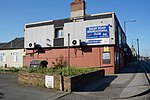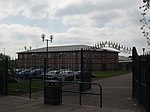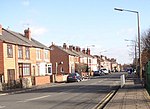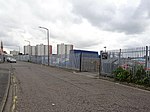Balby South (ward)
Use British English from May 2022Wards of Doncaster
Balby South—consisting of the southern part of the suburb of Balby—is one of 21 electoral wards in the Doncaster district, in the county of South Yorkshire, England. It forms part of the Doncaster Central parliamentary constituency. It is represented by 2 councillors on Doncaster Metropolitan Borough Council, both currently from the Labour Party. In 2011 it had a population of 10,011. The ward was formed in 2015.
Excerpt from the Wikipedia article Balby South (ward) (License: CC BY-SA 3.0, Authors).Balby South (ward)
Weston Road, Doncaster Alverley
Geographical coordinates (GPS) Address Nearby Places Show on map
Geographical coordinates (GPS)
| Latitude | Longitude |
|---|---|
| N 53.4998 ° | E -1.152 ° |
Address
Weston Road
Weston Road
DN4 8LE Doncaster, Alverley
England, United Kingdom
Open on Google Maps








